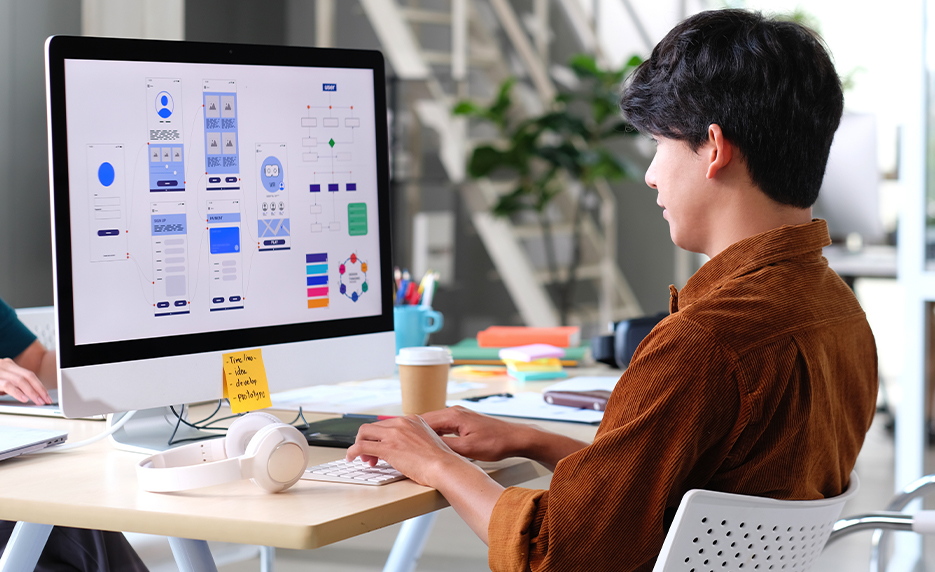Why Web Design Is Crucial for Building a Strong Online Presence
Why Web Design Is Crucial for Building a Strong Online Presence
Blog Article
Elevate Your Online Existence With Stunning Website Design Tips and Trends
In today's digital landscape, a compelling on the internet presence is necessary for services seeking to identify themselves from the competitors. The interplay of aesthetic allure, current style trends, and individual experience plays an essential role in accomplishing this objective. By discovering components such as minimalism, strong typography, and vivid shade systems, you can produce an interesting environment that resonates with visitors. Nevertheless, the subtleties of effective style prolong past aesthetic appeals; comprehending vital approaches for optimization can significantly influence your success. What certain fads and strategies can raise your web site to new elevations?
Relevance of Visual Charm
This fact underscores the critical duty that aesthetics play in individual engagement and retention. Efficient aesthetic style encompasses aspects such as shade schemes, images, format, and typography, all of which add to a attractive and cohesive user experience.
Additionally, an aesthetically appealing site infuses a sense of reputation and professionalism. Individuals are extra likely to rely on a site that looks well-structured and refined, which can dramatically impact conversion rates. On the other hand, a cluttered or unsightly layout can cause high bounce rates, as individuals may regard the internet site as undependable or obsolete.
Moreover, the aesthetic aspects of an internet site can convey brand identification and worths (Web design). Consistent use branding components, such as logo designs and shade schemes, reinforces recognition and fosters a much deeper link with the target market. To conclude, prioritizing visual appeal is crucial for producing engaging, reliable, and brand-aligned online experiences that reverberate with users
Present Style Patterns
Modern web design is continuously developing, and staying updated with current fads is essential for developing impactful on the internet experiences. One popular trend is the increase of minimalism, characterized by tidy lines, adequate white room, and an emphasis on crucial elements. This method not just enhances use however additionally allows web content to take center phase.
In addition, dark mode user interfaces have actually obtained popularity, providing individuals with a visually striking alternative while minimizing eye strain. This fad lines up well with user choices, offering a contemporary aesthetic that is both useful and elegant.
An additional notable fad is the consolidation of bold typography. Designers are progressively utilizing large, expressive typefaces to produce aesthetic hierarchy and communicate brand name messages successfully. Coupled with vivid shade palettes, this fad includes dynamism to website.

Necessary Design Aspects
Effective website design rests on a number of essential style components that with each other produce a natural and appealing individual experience. The initial of these components is design, which determines how material is arranged on the web page. A well-structured layout not only enhances readability however additionally guides users with the website perfectly.
Shade plays an important duty in design, influencing feelings and brand assumption. A harmonious color palette can stimulate details feelings and develop a visual pecking order, therefore attracting attention to vital components. Likewise, typography is essential; the option of fonts should align with the brand identification and make sure readability throughout devices.
In addition, whitespace is often overlooked however is necessary for developing equilibrium. It helps prevent clutter, enabling individuals to focus on the important aspects without interruption.
Finally, uniformity across all style elements reinforces brand identification and makes navigating user-friendly. By meticulously hop over to here including these important design elements, web developers can develop aesthetically enticing and useful websites that mesmerize site visitors and encourage interaction.
User Experience Optimization
A smooth individual experience is crucial for retaining site visitors and driving conversions on a site. Optimizing user experience (UX) entails comprehending your audience and customizing design components to fulfill their demands successfully. Key elements of UX optimization include intuitive navigation, quickly filling times, and clear contact us to action.
To enhance navigation, guarantee that food selections are organized logically and available from any kind of page. Include breadcrumb routes to help customers quickly backtrack, reducing aggravation. Speed is an additional important factor; sites should fill within three seconds to stop users from deserting the website. Utilize tools like image compression and internet browser caching to maximize load times.
Additionally, your website's design must prioritize clarity. Usage legible font styles, contrasting shades, and whitespace to produce an aesthetically appealing format that guides individuals through material easily. Contact us to action need to be plainly displayed, making use of workable language that encourages individuals to engage.
Mobile Responsiveness Strategies
Nearly half of all web traffic now originates from mobile gadgets, highlighting the relevance of executing durable mobile responsiveness approaches. To ensure optimum user experience throughout numerous screen sizes, internet designers have to welcome a fluid grid design that adjusts seamlessly to different devices. This technique allows content to resize and rearrange without compromising performance or appearances.
Incorporating adaptable photos and media queries is crucial. Pictures need to instantly change their dimension according to the viewport, while media queries can identify gadget attributes and apply customized CSS designs appropriately. This strategy enhances load times and ensures that individuals have an aesthetically click now enticing experience.
Furthermore, focus on touch-friendly navigation aspects. Buttons and web links ought to be easily tappable, with ample spacing to avoid misclicks. Preventing hover-dependent interactions better improves use on touchscreens.
Lastly, carrying out normal testing across numerous tools and browsers is crucial. Devices like Google's Mobile-Friendly Test can assist identify locations requiring improvement. By embracing these mobile responsiveness approaches, businesses can boost customer engagement, boost internet search engine rankings, and inevitably drive conversions, consequently dig this raising their on the internet existence effectively.
Final Thought
By prioritizing visual charm via existing design patterns and vital aspects, companies can promote reliability and engagement. Optimizing individual experience and guaranteeing mobile responsiveness are important for assisting in seamless communication throughout tools.

Alternatively, a chaotic or unsightly design can lead to high bounce rates, as customers might perceive the web site as undependable or out-of-date. - Web design
Effective web layout hinges on a number of essential layout components that together create a natural and interesting user experience. Enhancing individual experience (UX) entails comprehending your audience and tailoring style aspects to satisfy their demands effectively.
Report this page